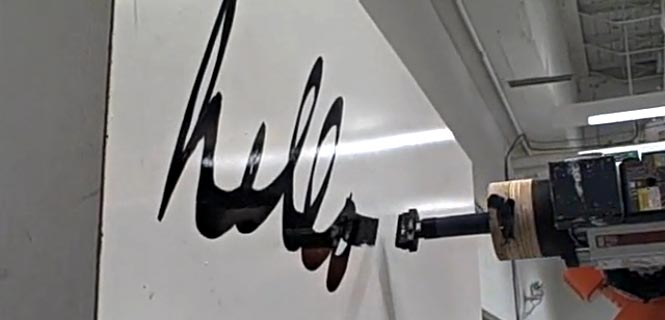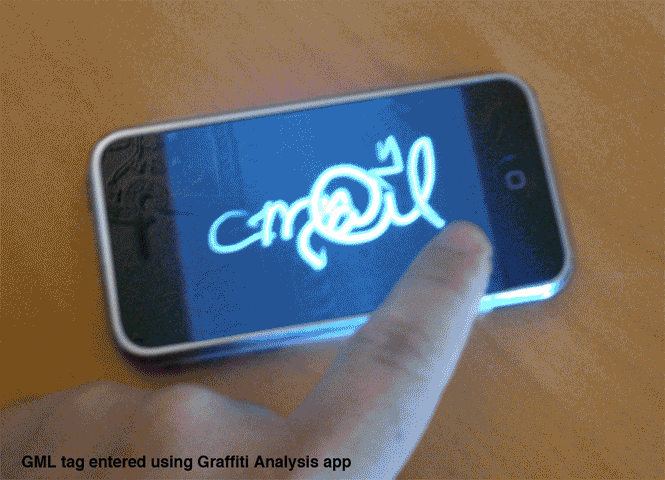Printed from www.flong.com
Contents © 2020 Golan Levin and Collaborators
Golan Levin and Collaborators
Projects
Sort by : Author | Date | Name | Type
- Installations
- Ghost Pole Propagator II
- Augmented Hand Series
- Eyeshine
- Re:FACE, Anchorage Version
- Merce's Isosurface
- Double-Taker (Snout)
- Opto-Isolator
- Eyecode
- Interstitial Fragment Processor
- Reface [Portrait Sequencer]
- Ghost Pole Propagator
- Footfalls
- Scrapple (Installation)
- The Manual Input Workstation
- Interactive Bar Tables
- Messa di Voce (Installation)
- Hidden Worlds of Noise and Voice
- Re:MARK
- Introspection Machine
- Audiovisual Environment Suite
- Dakadaka
- Rouen Revisited
- Performances
- Ursonography
- Scrapple (Performance)
- The Manual Input Sessions
- Messa di Voce (Performance)
- Dialtones (A Telesymphony)
- Scribble
- Net.Artworks
- Terrapattern
- Moon Drawings
- Free Universal Construction Kit
- QR Codes for Digital Nomads
- The Dumpster
- Axis
- JJ (Empathic Network Visualization)
- The Secret Lives of Numbers
- Alphabet Synthesis Machine
- Obzok
- Sketches
- Stria
- Dendron
- Slamps
- Banded Clock
- Floccus
- Stripe
- Meshy
- Directrix
- Yellowtail
- Streamer
- Blebs
- Self-Adherence (for Written Images)
- Poster design for Maeda lecture
- The Role of Relative Velocity
- Segmentation and Symptom
- Floccular Portraits
- Curatorial
- Mobile Art && Code
- ART AND CODE
- Code, Form, Space
- IEEE InfoVis 2008 Art Exhibition
- Solo exhibition at bitforms gallery
- IEEE InfoVis 2007 Art Exhibition
- Signal Operators
- Commercial / Industrial
- Motion Traces [A1 Corridor]
- Civic Exchange Prototype
- Amore Pacific Display
- Interactive Logographs
- Interval Projects
- Media Streams Icons
- Miscellaneous
- NeoLucida
- Rectified Flowers
- GML Experiments
- New Year Cards
- Admitulator
- Glharf (or Glarf)
- Finger Spies
GML Experiments
2010 | Golan Levin with F.A.T. Lab and other collaborators

Graffiti Markup Language (.gml) is a universal, XML based, open file format designed to store graffiti motion data (x and y coordinates over time). The format is designed to maximize readability and ease of implementation, even for hobbyist programmers, artists and graffiti writers. Beyond storing data, a main goal of GML is to spark interest surrounding the importance (and fun) of open data and introduce open-source collaborations to new communities. GML is intended to be a simple bridge between ink and code, promoting collaborations between graffiti writers and hackers. A wide variety of applications for capturing, displaying and disseminating GML have been developed.
As a member of the F.A.T. (Free Art and Technology) Lab, a collective dedicated to enriching the public domain through the research and development of creative technologies and media, I developed four GML-driven applications:
- RoboTagger,
- GML Stenciler,
- Obama GML Playa, and
- LiveWriter.
RoboTagger by Golan Levin & Jeremy Ficca
The RoboTagger is an eight foot tall industrial robot which draws tags and other marks encoded in GML. Inspired by a tweet from GML-co-creator Evan Roth, and developed in collaboration with Jeremy Ficca, director of Carnegie Mellon’s Digital Fabrication Laboratory (dFAB), the RoboTagger gave physical form to tags produced by TEMPT ONE, a paralyzed graffiti writer who recorded his tags using the F.A.T. Lab’s award-winning EyeWriter software. More information on the RoboTagger, including Processing source code, is available here.
Robotagger: GML + ABB4400 from Golan Levin on Vimeo.
Obama GML Playa by Golan Levin & Jérôme Saint-Clair
Based on a popular public-domain image of President Obama signing his initials on a wall, the Obama GML Playa shows the President drawing and redrawing random selections from the #000000book library of GML tags. Taking the form of an interactive Internet applet as well as a screensaver, the project was developed using the Processing library, GML GML4U by Jérôme Saint-Clair, and the Toxiclibs library by Karsten "Toxi" Schmidt. The Obama GML Playa and its complete source code can be accessed here.
GML Stenciler by Golan Levin & Charlie L.
GML Stenciler is an open-source software project for converting Graffiti Markup Language (GML) drawings into vector-art stencils suitable for laser cutting. This free tool solves the problem of transforming GML’s widthless linear strokes into adjustably-thickened stencil patterns with automatically bridged islands. More information about the GML Stenciler, including complete source code, can be found here.
